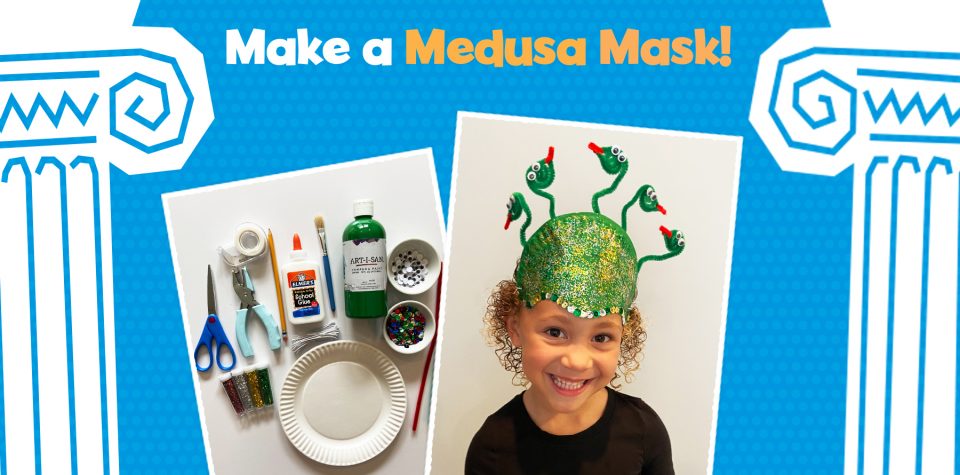
How to Make a Greek Mythology Medusa Mask
Greek mythology is a collection of myths, or tales, told by the ancient Greeks, featuring magical gods, goddesses, and creatures. Myth is a word that is short for mythology. Full of interesting stories, Greek mythology tells the tales of wars, heroic battles, and frightening monsters. The Greek myths also taught important themes of bravery, intelligence, and right and wrong.
The people of ancient Greece told the stories to their families and friends, passing them down from generation to generation. Telling the stories through theater became a central part of Greek culture. Actors would perform in costume and wear masks, which allowed them to impersonate the Greek gods, goddesses, and creatures.
In this Greek mythology-inspired craft, your child will be introduced to one of the tradition’s most famous creatures, Medusa, and learn about how her appearance came to be. Enjoy this colorful activity that will transform your child’s appearance. But don’t worry! They might have a head of snakes for now, but they won’t turn you to stone!
Supplies
- Uncoated white paper plate
- Green tempera paint
- Paintbrush
- 10 googly eyes (10mm)
- 5 green chenille stems
- 1 red chenille stem
- Scissors
- Pencil
- White glue
- Hole punch
- Tape
- Elastic cord
- Sequins, glitter, or markers (optional)
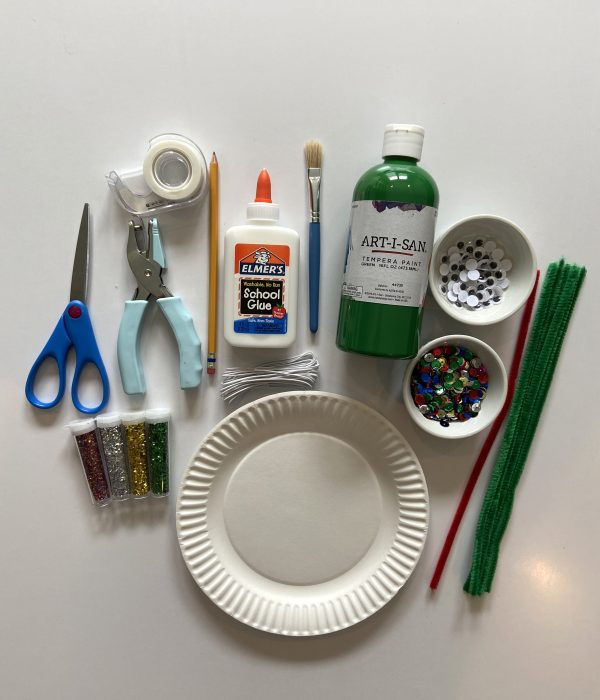
How to Make Your Medusa Mask
Step 1: Draw a line in the middle of the paper plate that contours the shape of the wearer’s brow, and cut it out.
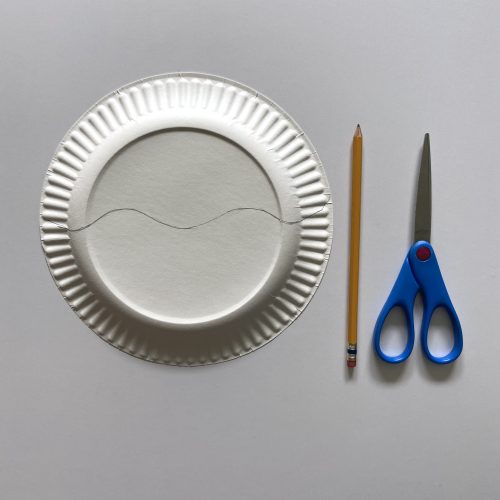
Step 2: Cover your workspace with newspaper, paper towels, or a drop cloth. Paint the plate with the green paint and set it aside to dry. For added flair, you can use different shades of green to paint your Medusa mask.
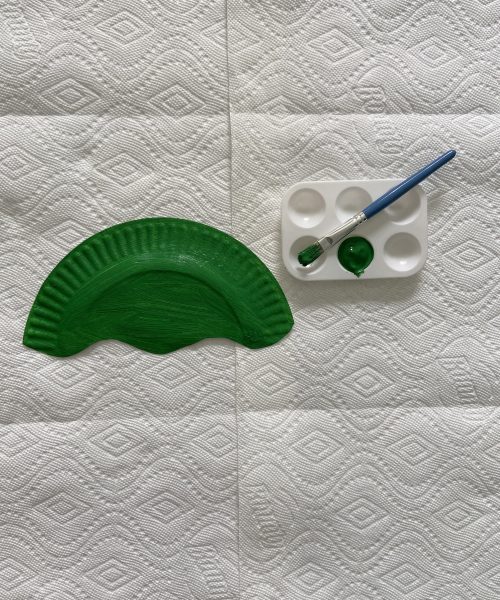
Step 3: While the paper plate dries, let’s make some snakes! Roll one end of a green chenille stem into a flat coil. The coiled part should be about the size of a quarter. Use your fingers to pinch the end of the coil, creating the snake’s nose.
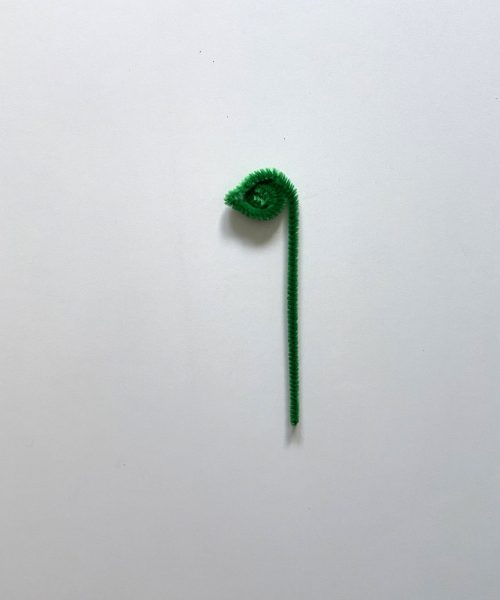
Step 4: Cut a one-inch piece of a red chenille stem to create the tongue of the snake. Attach it to the snake’s nose. Glue two googly eyes on the coil to finish the snake’s head. Repeat the process to create more snakes! We created five snakes for this activity, but feel free to create as many as you like!
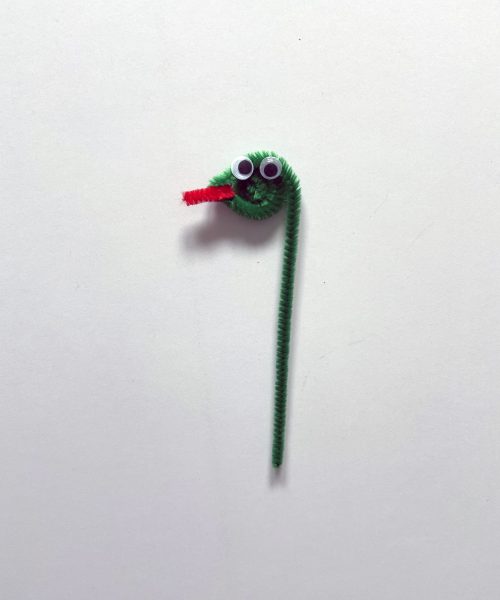
Step 5: When the plate is dry, it’s time to embellish your mask! Add glitter or sequins, or use markers to draw details that show Medusa’s reptilian features.
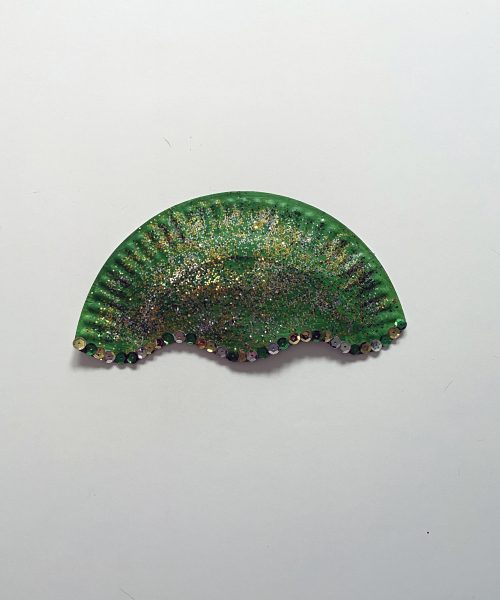
Step 6: Use clear tape to secure the end of each chenille stem snake to the back of the plate. Repeat this step for each of Medusa’s snakes!

Step 7: Make two holes for the elastic using a hole punch. Measure the mask against the wearer, and cut a length of elastic to fit. String the elastic cord through the holes and tie it into place.
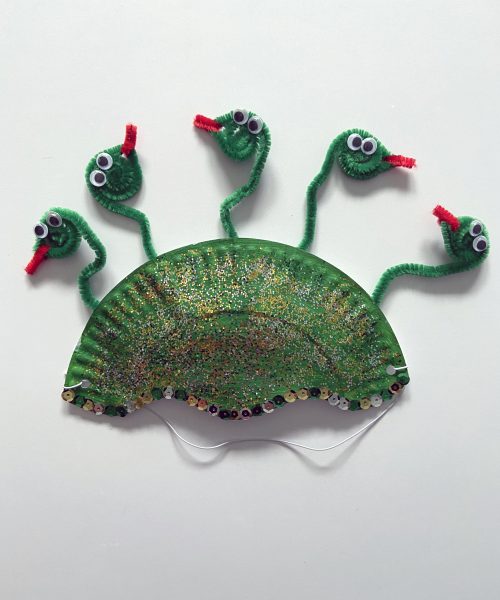
Step 8: Put the mask on and enjoy dressing up like this famous mythological creature, Medusa!

Bring on the history!
Why does Medusa have snakes for hair?
In Greek mythology, Medusa was a monster, called a gorgon. But before she was a monster, she was a young woman with long, golden hair. One day, she angered Athena, the goddess of wisdom and war. As punishment, Athena changed Medusa’s hair into squirming poisonous snakes. Anyone that looked at her would turn to stone. As a result, Medusa lived a lonely life.
If your child loves learning about new countries and cultures, check out our World Edition subscription, which features a different country every month, including Greece! Shop here.
